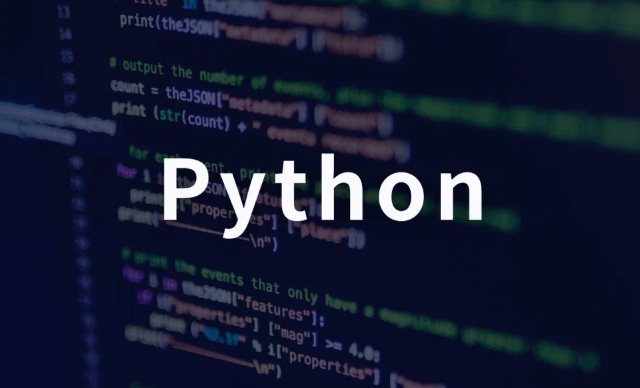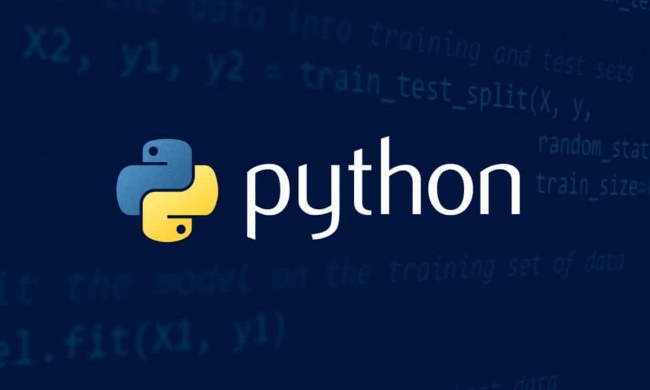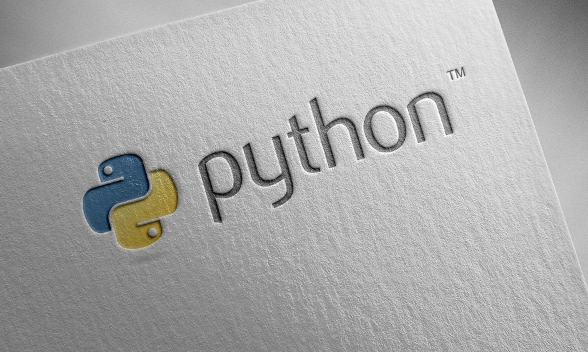GIL is a global interpreter lock in CPython, which ensures that only one thread executes Python bytecode at the same time. 1. The existence of GIL is mainly to simplify memory management and avoid problems caused by multi-threaded competition reference counting; 2. It has little impact on I/O-intensive tasks, because threads release GIL when waiting for I/O; 3. What is really affected is compute-intensive tasks, where multithreading cannot improve performance; 4. GIL can be bypassed or reduced through multiprocessing, C extensions, other Python implementations or asynchronous programming; 5. When choosing a solution, trade-offs should be made based on the specific task type and resource overhead. Therefore, although GIL has limitations, it is not an irresponsible problem.

Python's Global Interpreter Lock (GIL) is a "stumbling block" that many people encounter when learning multi-threading programming. It limits that only one thread can execute Python bytecode at the same time, which sounds like a performance bottleneck. But in fact, the existence of GIL has its historical background and design considerations. After understanding it clearly, you will find that it is not as bad as you imagined.

What is GIL?
GIL is a global lock that ensures that at any time in the CPython interpreter there is only one thread executing Python bytecode. Although this may limit the efficiency of multi-core CPU usage, it was originally designed to simplify memory management - CPython uses a reference counting mechanism. Without GIL, multiple threads modify object reference counts at the same time will cause competition problems.

Therefore, GIL is not designed to improve performance, but to ensure consistency of the internal state of the interpreter.
A common misunderstanding is: "As long as you use multiple threads, you will definitely be dragged down by GIL." In fact, this is not the case. If the program you write is mainly I/O-intensive tasks (such as network requests, file reading and writing), the impact of GIL is almost negligible. Because the thread will release the GIL while waiting for I/O, other threads can continue to run.

Which scenarios will be affected by GIL?
What is really affected by GIL is compute-intensive multi-threaded program . For example, if you open multiple threads to perform matrix operations, image processing or large number of numerical calculations, no matter how many CPU cores there are, these threads can only be executed in turn.
- Scientific computing and data analysis tasks
- CPU-intensive backend processing
- Parallel algorithm implementation
In this case, Python multithreading does not bring performance improvements, and may even cause additional overhead due to thread switching. At this time, you should consider using the multiprocessing module, which bypasses the limitations of GIL by starting multiple processes.
How to bypass GIL?
If you really need to make the most of a multi-core CPU, there are several common practices:
- Using
multiprocessing: Each process has its own Python interpreter instance, so naturally GIL will not be shared. - Calling external C extensions: Some libraries (such as NumPy, Pandas) are implemented in C at the bottom, and GIL can be released during execution.
- Use other Python implementations instead: like Jython or IronPython, which do not have GIL but are not as CPython compatibility.
- Using asynchronous programming: Although GIL cannot be bypassed, concurrency capability can be significantly improved in I/O-intensive tasks.
It should be noted that although multiprocessing can bypass GIL, it also brings higher memory overhead and cost of inter-process communication. Therefore, when choosing a plan, you should make trade-offs based on the specific business scenario.
Written at the end
GIL is one of the features of CPython. It does have limitations on certain types of applications, but it is not an unsolvable problem. The key is to understand your task type and to choose tools reasonably. For most daily development, GIL is not a big issue that needs to be deliberately avoided.
Basically that's it.
The above is the detailed content of Understanding Python's Global Interpreter Lock (GIL). For more information, please follow other related articles on the PHP Chinese website!

Hot AI Tools

Undress AI Tool
Undress images for free

Undresser.AI Undress
AI-powered app for creating realistic nude photos

AI Clothes Remover
Online AI tool for removing clothes from photos.

Clothoff.io
AI clothes remover

Video Face Swap
Swap faces in any video effortlessly with our completely free AI face swap tool!

Hot Article

Hot Tools

Notepad++7.3.1
Easy-to-use and free code editor

SublimeText3 Chinese version
Chinese version, very easy to use

Zend Studio 13.0.1
Powerful PHP integrated development environment

Dreamweaver CS6
Visual web development tools

SublimeText3 Mac version
God-level code editing software (SublimeText3)
 Polymorphism in python classes
Jul 05, 2025 am 02:58 AM
Polymorphism in python classes
Jul 05, 2025 am 02:58 AM
Polymorphism is a core concept in Python object-oriented programming, referring to "one interface, multiple implementations", allowing for unified processing of different types of objects. 1. Polymorphism is implemented through method rewriting. Subclasses can redefine parent class methods. For example, the spoke() method of Animal class has different implementations in Dog and Cat subclasses. 2. The practical uses of polymorphism include simplifying the code structure and enhancing scalability, such as calling the draw() method uniformly in the graphical drawing program, or handling the common behavior of different characters in game development. 3. Python implementation polymorphism needs to satisfy: the parent class defines a method, and the child class overrides the method, but does not require inheritance of the same parent class. As long as the object implements the same method, this is called the "duck type". 4. Things to note include the maintenance
 Python Function Arguments and Parameters
Jul 04, 2025 am 03:26 AM
Python Function Arguments and Parameters
Jul 04, 2025 am 03:26 AM
Parameters are placeholders when defining a function, while arguments are specific values ??passed in when calling. 1. Position parameters need to be passed in order, and incorrect order will lead to errors in the result; 2. Keyword parameters are specified by parameter names, which can change the order and improve readability; 3. Default parameter values ??are assigned when defined to avoid duplicate code, but variable objects should be avoided as default values; 4. args and *kwargs can handle uncertain number of parameters and are suitable for general interfaces or decorators, but should be used with caution to maintain readability.
 Explain Python generators and iterators.
Jul 05, 2025 am 02:55 AM
Explain Python generators and iterators.
Jul 05, 2025 am 02:55 AM
Iterators are objects that implement __iter__() and __next__() methods. The generator is a simplified version of iterators, which automatically implement these methods through the yield keyword. 1. The iterator returns an element every time he calls next() and throws a StopIteration exception when there are no more elements. 2. The generator uses function definition to generate data on demand, saving memory and supporting infinite sequences. 3. Use iterators when processing existing sets, use a generator when dynamically generating big data or lazy evaluation, such as loading line by line when reading large files. Note: Iterable objects such as lists are not iterators. They need to be recreated after the iterator reaches its end, and the generator can only traverse it once.
 Python `@classmethod` decorator explained
Jul 04, 2025 am 03:26 AM
Python `@classmethod` decorator explained
Jul 04, 2025 am 03:26 AM
A class method is a method defined in Python through the @classmethod decorator. Its first parameter is the class itself (cls), which is used to access or modify the class state. It can be called through a class or instance, which affects the entire class rather than a specific instance; for example, in the Person class, the show_count() method counts the number of objects created; when defining a class method, you need to use the @classmethod decorator and name the first parameter cls, such as the change_var(new_value) method to modify class variables; the class method is different from the instance method (self parameter) and static method (no automatic parameters), and is suitable for factory methods, alternative constructors, and management of class variables. Common uses include:
 How to handle API authentication in Python
Jul 13, 2025 am 02:22 AM
How to handle API authentication in Python
Jul 13, 2025 am 02:22 AM
The key to dealing with API authentication is to understand and use the authentication method correctly. 1. APIKey is the simplest authentication method, usually placed in the request header or URL parameters; 2. BasicAuth uses username and password for Base64 encoding transmission, which is suitable for internal systems; 3. OAuth2 needs to obtain the token first through client_id and client_secret, and then bring the BearerToken in the request header; 4. In order to deal with the token expiration, the token management class can be encapsulated and automatically refreshed the token; in short, selecting the appropriate method according to the document and safely storing the key information is the key.
 What are Python magic methods or dunder methods?
Jul 04, 2025 am 03:20 AM
What are Python magic methods or dunder methods?
Jul 04, 2025 am 03:20 AM
Python's magicmethods (or dunder methods) are special methods used to define the behavior of objects, which start and end with a double underscore. 1. They enable objects to respond to built-in operations, such as addition, comparison, string representation, etc.; 2. Common use cases include object initialization and representation (__init__, __repr__, __str__), arithmetic operations (__add__, __sub__, __mul__) and comparison operations (__eq__, ___lt__); 3. When using it, make sure that their behavior meets expectations. For example, __repr__ should return expressions of refactorable objects, and arithmetic methods should return new instances; 4. Overuse or confusing things should be avoided.
 How does Python memory management work?
Jul 04, 2025 am 03:26 AM
How does Python memory management work?
Jul 04, 2025 am 03:26 AM
Pythonmanagesmemoryautomaticallyusingreferencecountingandagarbagecollector.Referencecountingtrackshowmanyvariablesrefertoanobject,andwhenthecountreacheszero,thememoryisfreed.However,itcannothandlecircularreferences,wheretwoobjectsrefertoeachotherbuta
 Python `@property` decorator
Jul 04, 2025 am 03:28 AM
Python `@property` decorator
Jul 04, 2025 am 03:28 AM
@property is a decorator in Python used to masquerade methods as properties, allowing logical judgments or dynamic calculation of values ??when accessing properties. 1. It defines the getter method through the @property decorator, so that the outside calls the method like accessing attributes; 2. It can control the assignment behavior with .setter, such as the validity of the check value, if the .setter is not defined, it is read-only attribute; 3. It is suitable for scenes such as property assignment verification, dynamic generation of attribute values, and hiding internal implementation details; 4. When using it, please note that the attribute name is different from the private variable name to avoid dead loops, and is suitable for lightweight operations; 5. In the example, the Circle class restricts radius non-negative, and the Person class dynamically generates full_name attribute






